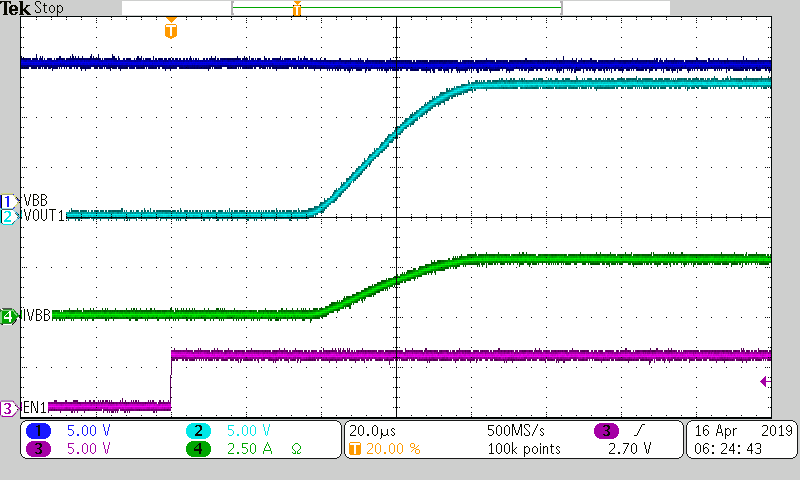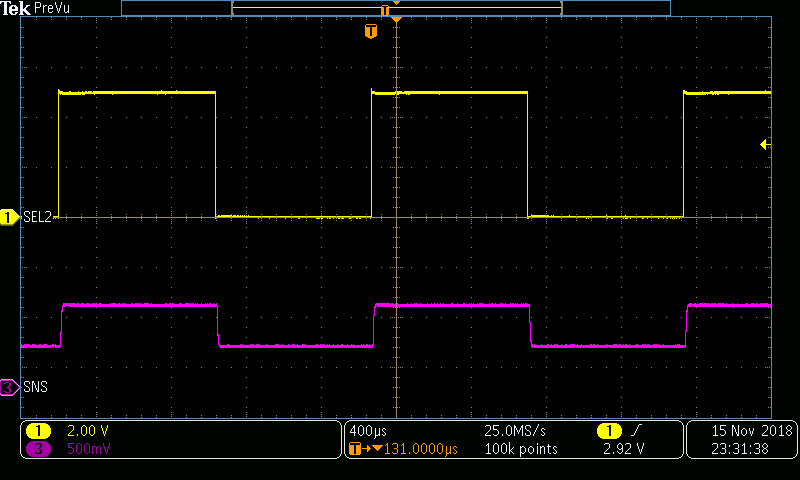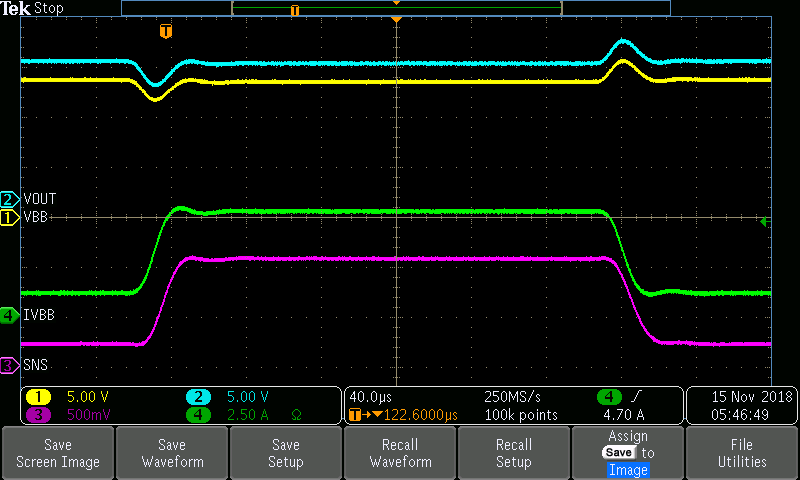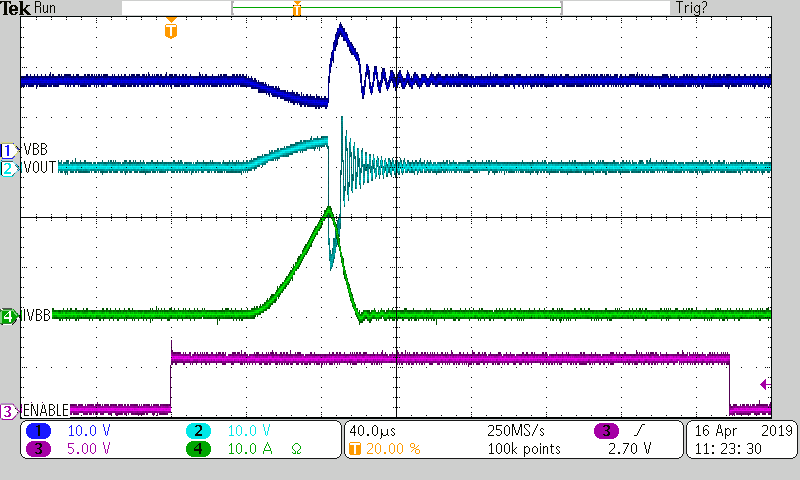SLVSDZ5A February 2018 – January 2020 TPS2HB50-Q1
PRODUCTION DATA.
- 1 Features
- 2 Applications
- 3 Description
- 4 Revision History
- 5 Device Comparison Table
- 6 Pin Configuration and Functions
- 7 Specifications
- 8 Parameter Measurement Information
-
9 Detailed Description
- 9.1 Overview
- 9.2 Functional Block Diagram
- 9.3
Feature Description
- 9.3.1 Protection Mechanisms
- 9.3.2 Diagnostic Mechanisms
- 9.4 Device Functional Modes
- 10Application and Implementation
- 11Power Supply Recommendations
- 12Layout
- 13Device and Documentation Support
- 14Mechanical, Packaging, and Orderable Information
Package Options
Mechanical Data (Package|Pins)
- PWP|16
Thermal pad, mechanical data (Package|Pins)
Orderable Information
10.2.3 Application Curves
When the device receives a rising edge on the ENx pulse the output will turn on as shown in . After the turn-on delay time, the device VOUT goes to the VBB supply and begins outputting the steady state resistive current.
 Figure 47. Turn On Waveform
Figure 47. Turn On Waveform When the device turns off on a falling edge of ENx, the channel IOUT will go to zero and the VOUT will drop to zero as well as shown in Figure 48.
 Figure 48. Turn-Off Waveform
Figure 48. Turn-Off Waveform While enabled, it is important to measure the output current through both channels. Figure 49 shows this behavior when toggling the SELx pins. The image shows that when SEL2 toggles high to low, the SNS pin toggles between representing IOUT1 and IOUT2. When SEL2 is low SNS represents IOUT1 and when SEL2 is high SNS represents IOUT2. This image shows that channel 2 is currently outputting twice the output current as channel 1.
 Figure 49. Toggling Between CH1 and CH2 Current Measurement
Figure 49. Toggling Between CH1 and CH2 Current Measurement  Figure 50. SNS Settling Time
Figure 50. SNS Settling Time If the output of the TPS2HB50-Q1 is short-circuited, the device will protect the system from failure. shows the device turning off the output at a set current limit when the output is short circuited. (Note: Figure 51shows a case with a higher RILIM than calculated in this example, so the current limit is higher than 18 A).
 Figure 51. TPS2HB50B-Q1 Short Circuit Waveform
Figure 51. TPS2HB50B-Q1 Short Circuit Waveform